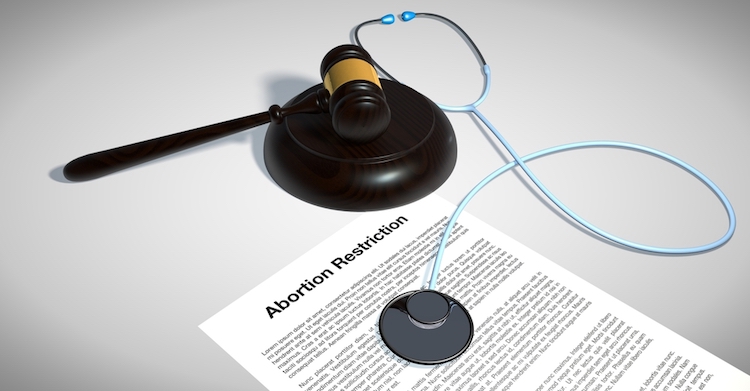2 top state courts issue conflicting rulings over abortion restrictions

Image from Shutterstock.
The Montana Supreme Court on Aug. 9 upheld a lower court decision that temporarily blocked three separate laws that restrict abortion.
The laws, which were enacted in Montana last year, ban abortion after 20 weeks of pregnancy, create stricter standards for medication abortion, and implement a mandatory ultrasound offer to patients seeking abortions.
In its opinion, the Montana Supreme Court held that the district court correctly relied on its 1999 decision in Armstrong v. State—which says laws that interfere with bodily autonomy violate the state constitution’s right to privacy—in granting the preliminary injunction.
“Because the district court found that the challenged laws restrict access to abortion services, it applied strict scrutiny under Armstrong,” according to the Montana Supreme Court. “The court followed our precedent and did not commit an error of law when it employed this standard.”
Planned Parenthood of Montana filed the case, which now returns to the district court for a full trial on the merits. The state had appealed the injunction in January and asked the Montana Supreme Court to overturn the Armstrong decision.
The Associated Press, the Hill, Montana Public Radio and Law360 have coverage of the decision.
Meanwhile, the Idaho Supreme Court declined to stop a near-total abortion ban Friday, meaning that the procedure will largely become illegal in its state Aug. 25.
The state supreme court issued its decision in response to challenges filed by a chapter of Planned Parenthood and a doctor to block three Idaho trigger laws that would take effect once the U.S. Supreme Court overturned Roe v. Wade and Planned Parenthood v. Casey in Dobbs v. Jackson Women’s Health Organization in June. These laws made it a felony to perform an abortion with few exceptions, banned abortions after six weeks of pregnancy, and allowed relatives of a fetus or embryo to sue abortion providers.
While petitioners asked the Idaho Supreme Court not to enforce these restrictions while their lawsuits moved forward, the court said they failed to “demonstrate a substantial likelihood of success on the merits or a ‘clear right’ to the ultimate relief requested.”
“What petitioners are asking this court to ultimately do is to declare a right to abortion under the Idaho Constitution when—on its face—there is none,” the Idaho Supreme Court held in its opinion. “In fact, before Roe announced a federal constitutional right to abortion in 1973, abortion had been a long-standing criminal offense in Idaho.”
According to the Idaho Statesman, oral arguments in the lawsuits are scheduled for late September.
The New York Times, Reuters and Boise State Public Radio also reported on the decision.
The U.S. Department of Justice filed another lawsuit in early August contending that Idaho’s near-total ban on abortion conflicts with federal law requiring stabilizing emergency room treatment.
The Emergency Medical Treatment and Active Labor Act, known as the EMTALA, requires hospitals that receive federal Medicare funds to provide necessary stabilizing treatment to arriving emergency room patients with medical conditions that pose a risk to their lives, put their health in serious jeopardy, or create a risk of serious impairment.
See also:
ABAJournal.com: “What are abortion trigger laws, and where do they stand?”



